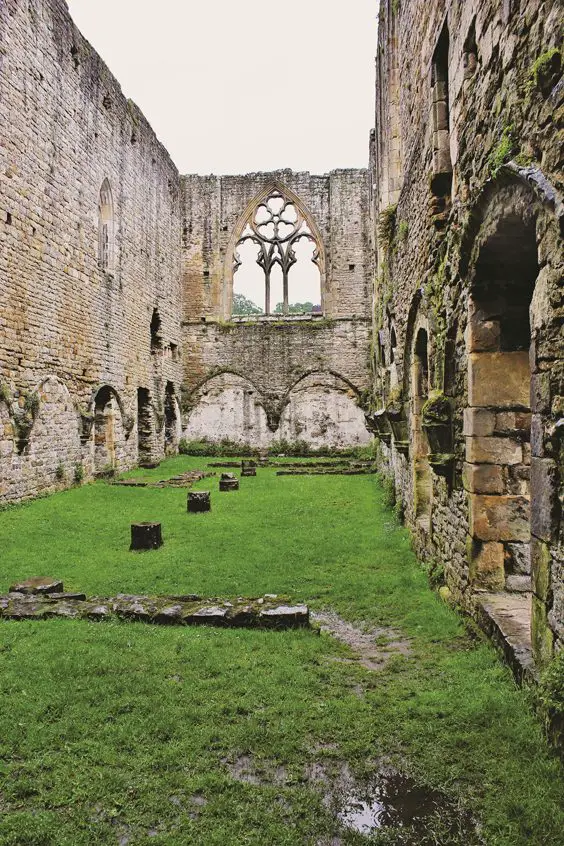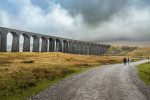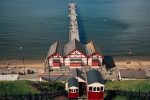Easby Abbey near Richmond – History
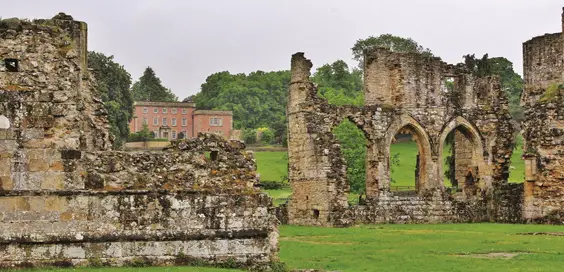
By Andrew Graham Stables
Around 1.5 miles south of Richmond, on the southern side of the River Swale, stands one of the best-preserved Premonstratensian monasteries in Britain. The location may have been part of a pre-Norman religious community based on the existing parish church of St Agatha at Gilling West. The hamlet of Easby is mentioned in the Domesday Book of 1086 as ‘Asebi’, which was held by Enisan Murdac, who was a vassal of Alan the Red.
The Premonstratensian order was founded in 1121 in France and followed the Rule of St Augustine, which meant the canons (not monks) could serve their communities by preaching, teaching and charitable work. This also meant they could serve as a parish priest and had the authority to celebrate mass and administer sacraments.
Easby Abbey was founded around 1152 by Roald, a constable of Richmond, who granted a modest new endowment of land, adding to the assets of the existing minster community. The abbey’s benefaction rose over the years, increasing their land increasing their livestock, mainly sheep. The abbey seems to have prospered in the late twelfth century and the number of canons increased, including the expansion in 1198 to Egglestone Abbey in nearby Teesdale, which was founded as Easby’s only daughter house. Easby’s original buildings were also replaced at this time but on a much grander scale and only parts of the buildings can still be traced to before the late twelfth century.
“Improper relations”
The descendants of Roald continued to hold the constableship of Richmond and the lands attached during this period, but during 1301 and 1321 they began to lose influence and patronage passed to the Scrope family, who were great landowners based at Bolton Castle in Wensleydale.
The Scropes were responsible for enlarging the abbey by further grants of land and the ‘community was to support 10 additional canons, two chaplains and 22 poor men’. In 1320, the abbot was appointed as one of several to audit the accounts of the collectors of a ‘tenth’ for the Scottish War, which had been promised by Edward II and ‘paid to the Scots ‘ as part of the truce agreed with them. In the late fifteenth century, Richard Redman, Abbot of Shap and later Bishop of Ely, and the principal of the Premonstratensians in England, visited the abbey on a regular basis.
In 1482 Redman found that a John Nym was a fugitive from the community who was accused of having improper relations with a widow. He was later found to be innocent and continued to be involved with the community. He also reported the community was in debt but the buildings were in a reasonable state of order and well provided with food.
In 1535 when the abbeys were being suppressed by Henry VIII and Thomas Cromwell, Abbot Robert Bampton (1511–36) restated the rights of the Scropes as patrons and the abbey continued as others were closed down. However, the writing was on the wall, and with a community down to just eleven canons, in 1536, the abbey was dissolved and its lands were let to Lord Scrope of Bolton for £300. With Easby as the burial place of the Scrope family, it seems strange that they ordered the demolition of the church, but by 1538, most of the buildings had been stripped of their lead roofing and were partly demolished. Perhaps the church was ruined as part of the royal command to prevent the religious house being used again and ensuring a permanent closure.
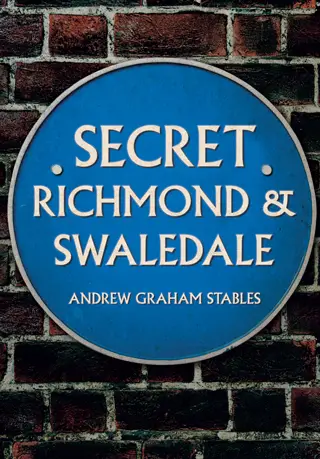 “Money-making vandals”
“Money-making vandals”
Ownership of Easby continued with the Scrope family until 1630 when through the female line and marriage the Howes inherited the Easby estate. Though they kept the name Scrope, it was suffixed by Howe, and in 1700 Sir Scrope Howe sold it to Bartholomew Burton, whose son became an MP and Governor of the Bank of England. The abbey passed through several different hands in the eighteenth century before being bought by Robert Jaques in 1816, who had amassed his fortune through the East India Company. The family continued to own the abbey until 1930, when they were taken into guardianship by the Ministry of Works.
Today we think of these religious houses as being the home of pious, gentle and kindly souls. This is simply not true, an example of which took place in 1284 when a complaint was made by John de Hellebeck and John de Bellerby that the abbot and his fellow canons had sabotaged a mill at Bolton-on-Swale. Apparently the abbot claimed an annual rental of 2s from the mill, claiming it was a gift from Robert de Hellebeck. The jury found that the abbot’s servants had stripped off the iron and other goods from the mill, thereby rendering it unusable. The verdict was given against the abbot, and the damages were assessed at 10s. These men were simply money-making vandals, whose main devotion was to profit rather than saving the souls of men.
The canons at St Agatha’s did not take the dissolution without resistance, and trouble promoted by them caused Henry VIII to write to Norfolk, sent to quell rebellion, to ‘without pity or circumstance, now that our banner is displayed, cause the monks to be tied up without further delay or ceremony’. It is understood ‘tied up’ meant to be hung.
Article taken from ‘Secret Richmond and Swaledale’ by Andrew Graham Stables, published by Amberley Publishing, £14.99 paperback, ISBN: 9781445683911
